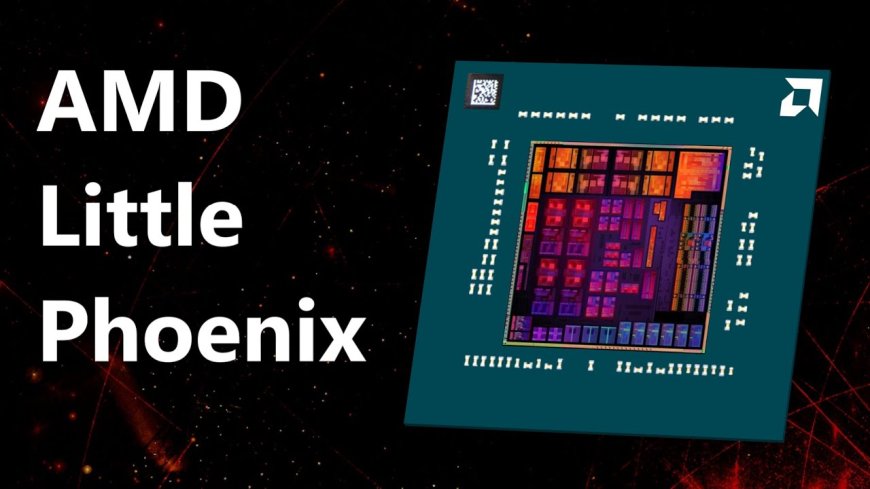Revealing the Secrets of Steam Deck's Custom AMD Processor: Van Gogh Die Shots Unveiled
The original Steam Deck has been making waves in the gaming community, boasting impressive handheld gaming capabilities. While gamers have marveled at its performance, an in-depth analysis of the custom AMD processor inside, codenamed Van Gogh, has recently been conducted. YouTuber High Yield and photographer Fritzchens Fritz have released a comprehensive examination of Van Gogh's 7nm APU, complete with die shots and annotated components. This analysis not only sheds light on the inner workings of the Steam Deck but also reveals unused hardware components, adding intriguing layers to the story.

Unveiling the Van Gogh APU
Van Gogh, codenamed Aerith by Valve, represents a collaborative effort between AMD and TSMC, with manufacturing taking place on TSMC's 7nm process. This APU, primarily designed for handheld gaming, packs four Zen 2 cores and eight RDNA 2 Compute Units (CUs). While these specs may seem modest compared to mainstream Ryzen APUs for laptops, Van Gogh's uniqueness lies in its near-exclusive use within the Steam Deck.
Also check K7 TOTAL SECURITY 1.0 USER 1 YEAR
The Die-Shot Analysis
The die-shot analysis conducted by High Yield and Fritzchens Fritz delves deep into the Van Gogh APU, providing valuable insights into its architecture. Notably, it confirms the basic specifications, including the four Zen 2 cores and eight RDNA 2 CUs. However, the true revelation lies in understanding the significance of each component within the APU.
Van Gogh's die measures 162mm², with key components occupying specific portions of this space. The LPDDR5 memory buses account for approximately 9% of the die area, while the CPU cores take up 12%, and the GPU cores consume 11%. Intriguingly, the GPU cores themselves constitute only half of the entire graphics processor, with the remaining space dedicated to miscellaneous GPU functions and components.
The die shots further expose that I/O components, essential for USB ports and display capability, are located within the other half of Van Gogh's total size. However, what truly piques curiosity is the presence of unaccounted areas on the die.
Unraveling the Mystery: CVPE Component
High Yield's analysis unveils that approximately 13% of the Van Gogh APU's space is dedicated to a component that initially eluded identification. This enigmatic component is believed to be the computer vision processing engine (CVPE), a critical element used in the Magic Leap 2 augmented reality (AR) headset. Notably, the Magic Leap 2 employs AMD's Mero APU, featuring four Zen 2 cores and eight RDNA 2 CUs, mirroring the specifications of Van Gogh.
High Yield speculates that Van Gogh and Mero are, in fact, the same chip, utilized both in the Steam Deck and the Magic Leap 2. This hypothesis gains credence when considering the 6nm Sephiroth APU used in the Steam Deck OLED, which is considerably smaller than the 7nm Aerith chip. TSMC's 6nm process offers 18% denser logic transistors compared to 7nm, yet Sephiroth's reduced size suggests the removal of certain components.
The Potential of Unused CVPE Hardware
One intriguing possibility raised by High Yield is that original Steam Deck units may possess the capability to utilize the CVPE hardware that currently lies dormant. However, whether this potential can be harnessed depends on whether AMD has manually disabled the CVPE using laser methods or if it's simply turned off through firmware. The extent to which modders can tap into the CVPE remains uncertain, given its exclusive use in Magic Leap hardware and software.
As the analysis of Van Gogh's die shots continues to unfold, it opens up exciting prospects for the Steam Deck and the potential for hidden capabilities within this innovative gaming device. The convergence of AMD's technology in both gaming and augmented reality showcases the versatility of modern processors and the intriguing possibilities that lie beneath the surface. Gamers and tech enthusiasts alike await further developments with bated breath, eager to uncover the full extent of Van Gogh's potential.


































